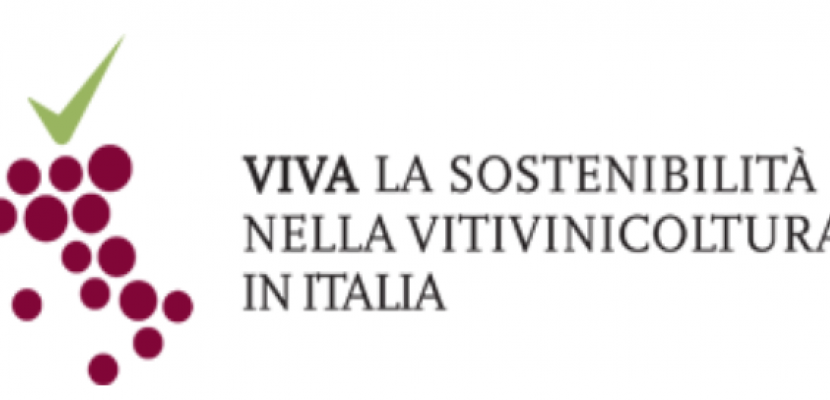Image

Viticulture Impact Assessment on the Environment (VIVA)
Published on 13 January 2022

Italy
This is the good practice's implementation level. It can be national, regional or local.
About this good practice
It is essential to improve the sustainability approach for companies working in agri-food production for its dependence on the natural resources use and its account of 70% of total freshwater withdrawals and 30% of anthropogenic GHG emissions.
VIVA methodology uses 4 indicators to measure the company/product impacts: AIR: carbon footprint based and compliant with; WATER: water footprint based on Water Footprint Network; VINEYARD: agronomic management practices based on Directive 2009/128/EC on sustainable use of pesticides and the OIV guidelines (CST 2008 guide); TERRITORY: socio-economic-cultural based on ISO 26000:2010, Social LCA (UNEP/SETAC 2015) and Sustainability Reporting Guidelines (GRI 2014)
According to these, the product is evaluated "from cradle to grave"
VIVA sets a training program to promote new professionalism in the agri-food system:
•Training course by the Italian Ministry of Ecological Transition in collaboration with “Università Cattolica del Sacro Cuore of Piacenza”;
•Theoretical lessons and practical workshop on available database, technical requirements on the four indicators
•E-Learning platform on: social-economic-environmental impacts of wine activities monitoring; common standards identification for evaluation and certification of sustainability performance; sustainability protocols/features of verification process identification
•“Wine Observatory on Sustainability” networking web platform to share experiences, tools and best practices.
VIVA methodology uses 4 indicators to measure the company/product impacts: AIR: carbon footprint based and compliant with; WATER: water footprint based on Water Footprint Network; VINEYARD: agronomic management practices based on Directive 2009/128/EC on sustainable use of pesticides and the OIV guidelines (CST 2008 guide); TERRITORY: socio-economic-cultural based on ISO 26000:2010, Social LCA (UNEP/SETAC 2015) and Sustainability Reporting Guidelines (GRI 2014)
According to these, the product is evaluated "from cradle to grave"
VIVA sets a training program to promote new professionalism in the agri-food system:
•Training course by the Italian Ministry of Ecological Transition in collaboration with “Università Cattolica del Sacro Cuore of Piacenza”;
•Theoretical lessons and practical workshop on available database, technical requirements on the four indicators
•E-Learning platform on: social-economic-environmental impacts of wine activities monitoring; common standards identification for evaluation and certification of sustainability performance; sustainability protocols/features of verification process identification
•“Wine Observatory on Sustainability” networking web platform to share experiences, tools and best practices.
Expert opinion
Capacity building for a specific sector, such as wine making, in the use of environmentally friendly techniques and the use of environmental impact assessment tools is conductive to raise awareness about the potential impact of this agri-food value chain on air, water and soil. Awareness is the first step towards management of detrimental impacts. The training courses for members of the viticulture value chain are very useful and hands-on tools to help them reduce emissions and impact. A sector-specific approach makes the good practice more relevant for the concerned value chain and is more conductive to engage people and motivate them to change their agricultural practices.
Works at
Interreg Europe Policy Learning Platform
Resources needed
The voluntary agreement signature is for free. The company costs are related to the assessment (if the service is outsourced) of VIVA indicators independently or with external consultants and the third-party certification procedure to publish the results and apply the product’s label.
Evidence of success
The environmental scientific journal "Science of the Total Environment" has recognized the scientific validity of the calculation methodology underlying the analysis of the Air, Territory, Water and Vineyard Indicators.
Finally, more than 90 Italian companies since 2014 have joined the VIVA program.
Finally, more than 90 Italian companies since 2014 have joined the VIVA program.
Potential for learning or transfer
VIVA promotes sustainability through specific courses/workshops to consultants, verification bodies, technicians and experts in viniculture field, containing theoretical and practical parts, based on case studies. The lessons aim at providing participants information to receive VIVA certification and at giving them an essential overview of the four indicators based on the LCA approach: interpret, evaluate LCA studies, understand strengths/weaknesses of this tool and provide knowledge and methodology of performing a complete LCA. For example, the three-day course covers topics as the phases of an LCA and how to collect data, useful tips and tricks to calculate the Indicator, available data and data exchange with product/organization systems, result analysis and interpretation, allocation and system expansion, end-of-life modelling, data quality.
Training courses are given every six months and contribute to firms’ know-how improvement and to create new “green job” opportunities.
Training courses are given every six months and contribute to firms’ know-how improvement and to create new “green job” opportunities.
Further information
Website
Good practice owner
You can contact the good practice owner below for more detailed information.
Organisation
Ministero della Transizione Ecologica della Repubblica Italiana

Italy
Lazio
Contact
Doctor
